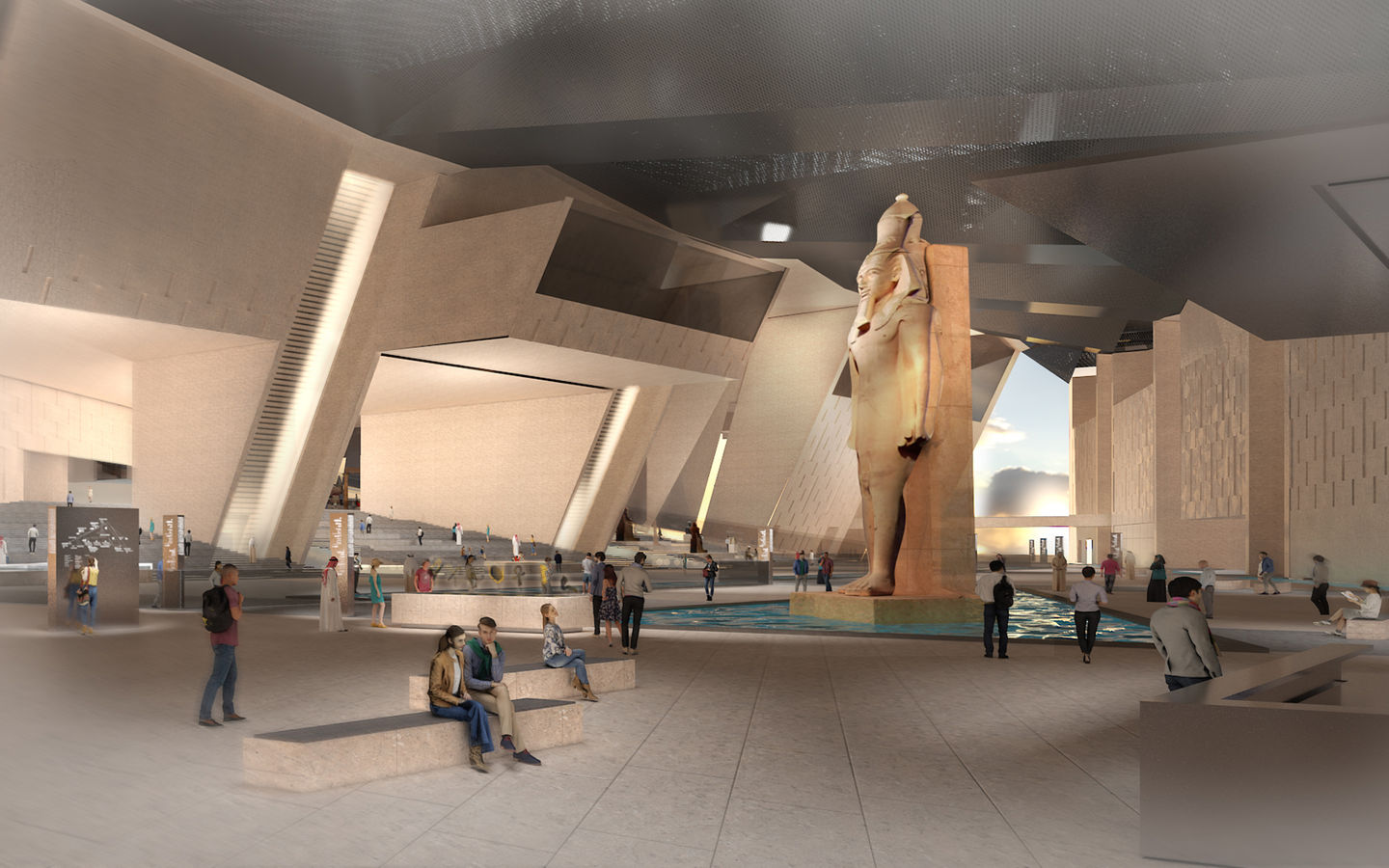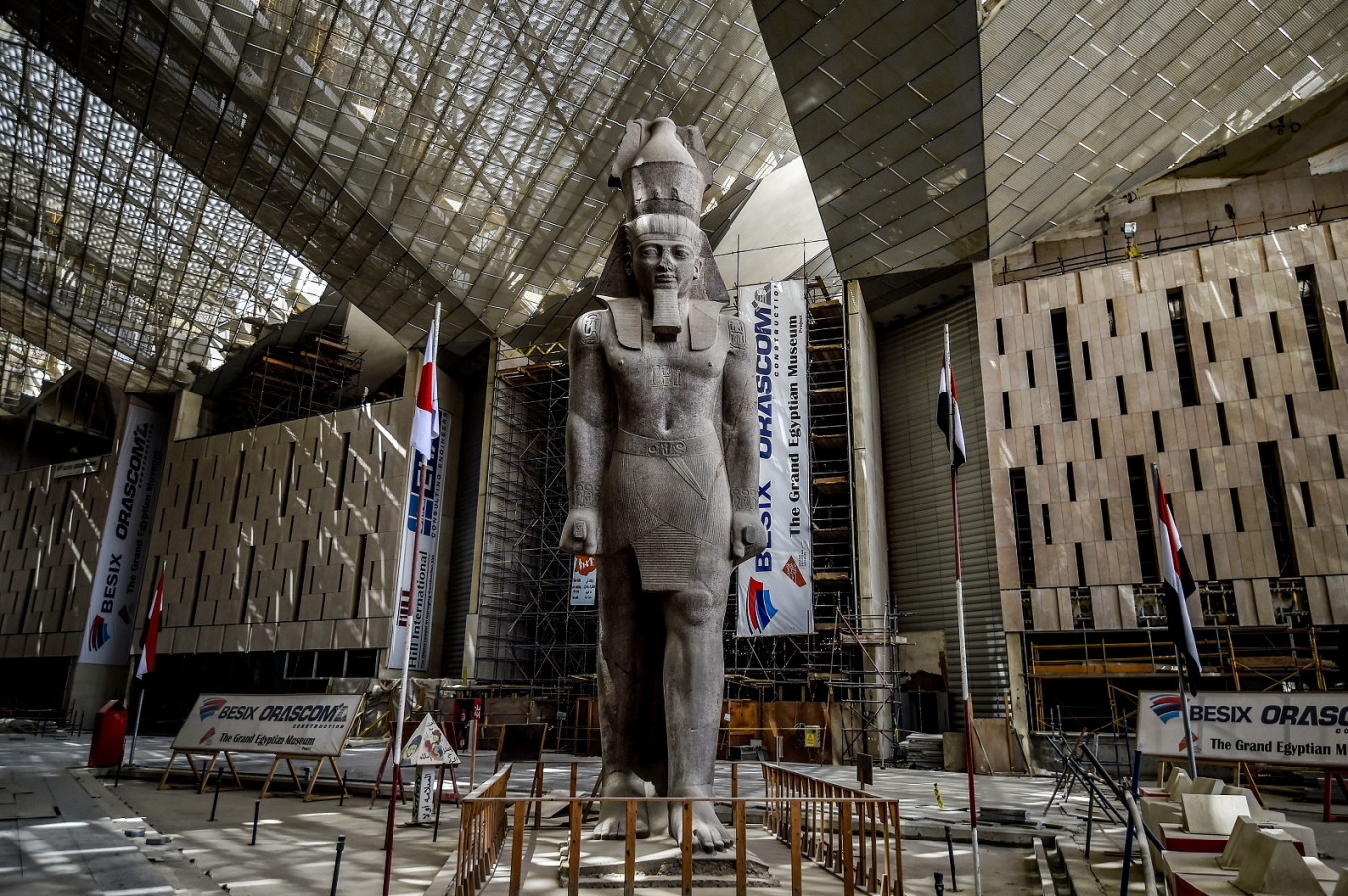The Great Egyptian Museum (GEM) will feature more than 50,000 artifacts from Ancient Egypt, including a complete collection of King Tutankhamun.
According to sources in the Ministry of Tourism and Antiquities, the Great Egyptian Museum (GEM) announced last Thursday the installation of the world’s first hanging obelisk.
According to the ministry, the new design is designed to give the visitor a unique look, as he will stand on a glass plate, resting on the base of the obelisk.
The ministry added that the construction of the obelisk in front of the museum facade was completed after its restoration. The obelisk is now the only one that visitors will see before entering the museum.

This design is the first of its kind, and is a very precise system that was created to protect the body of the obelisk from vibration.
Visitors will be able to stand on the base of the obelisk, which will be hung on four columns, and look directly into its interior, which has not been seen for over 3,500 years. They will also be able to see visitors standing at a distance between the base of the obelisk on the ground and its body raised above head level.
The installation of the obelisk is a complex engineering process, because the ancient artifact should not be affected by any vibrations of modern transport. These include fluctuations from the Cairo metro underground system after the completion of construction work or from the movement of cars around the museum, the statement said.

GEM, which is 97% complete, is one of the largest museums in the world dedicated to one civilization in the world. It will feature more than 50,000 artifacts from Ancient Egypt, including the complete collection of King Tutankhamun, presented to the public for the first time in history.
In April 2020, Egyptian President Abdel Fattah al-Sisi decided to postpone the opening of GEM and the new National Museum of Egyptian Civilization until 2021 in response to the new coronavirus pandemic (COVID-19).
The museum will allow its visitors to move freely between the museum and the surrounding Giza plateau, on foot, on a golf buggy or by cable car.

